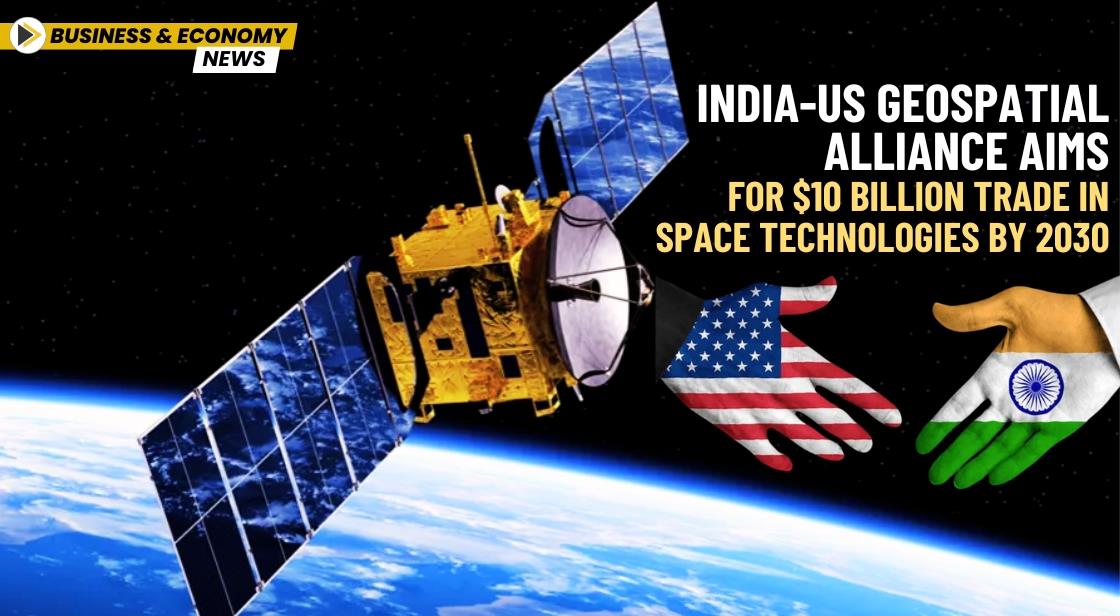India-US Geospatial Alliance Aims for $10 Billion Trade in Space Technologies by 2030

News Synopsis
A major milestone in the expanding strategic relationship between India and the United States was achieved at the 4th India-USA Space and Geospatial Business Summit, held on December 2 at the Hyderabad International Convention Centre. The summit, organized by the Geospatial World Chamber of Commerce in collaboration with Geospatial World, brought together experts from government, industry, academia, and research to explore the growing potential of the geospatial and space sectors. This summit aimed to drive innovation, economic growth, and sustainability.
Projected Growth in Bilateral Trade
The summit focused on the projection that bilateral trade in geospatial and space technologies between India and the US will rise from $2.5 billion in 2024 to $10 billion by 2030. This increase highlights the potential for mutual growth through investments in technology, policy alignment, and manufacturing. Discussions at the summit emphasized the importance of collaboration and outlined strategies to strengthen ties, such as technology transfer and advanced manufacturing in geospatial equipment.
Synergy Between India and the US
Rajeev Jyoti, Director (Technical) at IN-SPACe, highlighted the NASA-ISRO SAR (NISAR) Mission as an example of successful collaboration between India and the US. He pointed out that India’s National Geospatial Policy (2022) and Space Policy (2023) have helped catalyze the growth of the geospatial and space industries in India. He also mentioned that the Earth Observation (EO) industry, growing at a compound annual growth rate (CAGR) of 16%, is expected to reach $8 billion, with India positioned to play a leading role in this expansion.
India’s Growing Role in Geospatial Technology
Sanjay Kumar, CEO of Geospatial World, discussed India’s rapidly expanding geospatial sector, valued at $1.92 billion. He noted that India is well-positioned to lead in providing cost-effective geospatial services. The COVID-19 pandemic highlighted the transformative potential of geospatial technologies, fostering innovation and cross-border collaboration. Kumar emphasized that India’s strengths in delivering affordable solutions align well with the US’s leadership in cutting-edge technology, making the two nations powerful partners in driving global geospatial advancements.
Hyderabad: A Global Geospatial Hub
Jennifer Larson, US Consulate General in Hyderabad, underscored the city’s position as a global leader in geospatial data processing, claiming that Hyderabad processes more geospatial data than any other city worldwide. She also highlighted the growing integration of artificial intelligence (AI) and machine learning (ML) with geospatial data to address critical global issues, including climate change, disaster management, and food security. Larson expressed optimism about the future of the collaboration, with a focus on achieving the $10 billion trade target by 2030.
India’s National Geospatial Policy and Private Sector Growth
Srikant Sastri, Chairman of the Geospatial Data Promotion & Development Committee (GDPDC), discussed the transformative impact of India’s National Geospatial Policy 2022. This policy empowers private companies to acquire, store, and process spatial data, thereby modernizing the country’s mapping and data infrastructure. Sastri emphasized that this initiative will not only accelerate domestic industry growth but also create opportunities to expand India-US bilateral trade through geospatial technology.
Conclusion: Call for Enhanced Collaboration
The summit concluded with calls for deeper research collaborations, streamlined technology transfer frameworks, and strengthened networks between businesses, governments, and research institutions. These efforts are crucial to meeting the ambitious goal of $10 billion in bilateral trade by 2030. Both countries aim to leverage geospatial and space technologies to solve global problems, foster sustainability, and boost economic development.
You May Like









